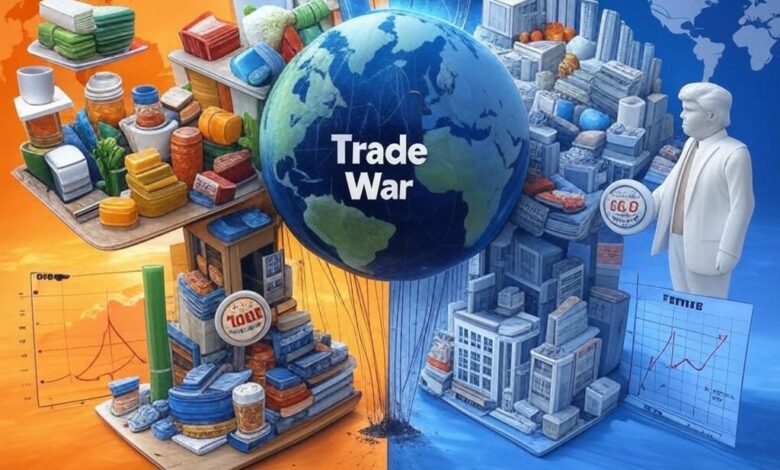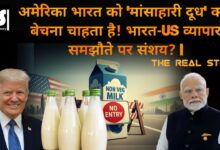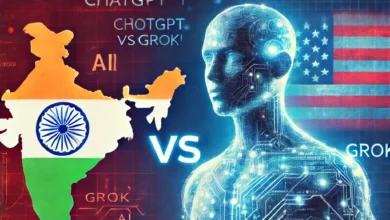Trump’s 26% Tariff on India: A Deep Dive into the Economic Fallout
India’s Economic Hit A $2-7 Billion Blow

(The Inquest Analysis)
April 02, 2025 : U.S. President Donald Trump on Thursday, unveiled a sweeping trade offensive, slapping a 26% reciprocal tariff on imports from India, alongside similar levies on China (54%), Vietnam (45%), Japan (24%), South Korea (25%), and others, as part of his “Liberation Day” agenda. For India, the move—targeting a nation Trump accuses of imposing 52% tariffs on American goods—threatens to upend a $190 billion annual trade relationship. While trade experts peg India’s actual trade-weighted tariff at 12-15%, the U.S. insists this is about fairness. Drawing on fresh reports, industry data, and economic projections, this article explores the fallout, naming the Indian companies in the crosshairs and weighing the economic, social, and global stakes for both nations.
India’s Economic Hit: A $2-7 Billion Blow
India exported $77.5 billion in goods to the U.S. in FY 2023-24, cementing its status as America’s top trading partner from the subcontinent. Trump’s tariff, effective 9 April, could slice $2-7 billion off that figure annually, per Citi Research and SBI Research. Though a 3-5% dip, it might trim India’s 6.6% GDP growth forecast for 2025 by 0.05-0.1%, says Devendra Kumar Pant of India Ratings & Research.
The damage varies by sector. Pharmaceuticals, with $8 billion in U.S. exports last year, face a 5-10% revenue hit unless critical generics win exemptions. Titans like Sun Pharma, Dr. Reddy’s Laboratories, and Cipla—key to 40% of America’s generic drugs—could lose ground to Irish or Canadian rivals. Smaller firms, already on tight margins, risk collapse.
Textiles, worth $9.6 billion to the U.S., are equally exposed. A 26% tariff could inflate prices by 15-20%, nudging buyers towards Vietnam or Bangladesh. Arvind Ltd., Welspun India, and Trident Group—pillars of India’s $40 billion textile trade—might see 10-15% of U.S. orders vanish, endangering jobs in Gujarat and Tamil Nadu.
The $8.5 billion gems and jewellery sector, rooted in Surat, faces a 10-20% export drop. Titan Company and Rajesh Exports could struggle as Indian diamonds lose sparkle against Israeli or Belgian alternatives. Auto exporters like Bajaj Auto and Motherson Sumi, shipping $2-3 billion in bikes and parts, brace for a 5-10% decline, while steel giants Tata Steel and JSW Steel might absorb a milder 2-5% hit, softened by existing U.S. duties.
Agriculture rounds out the casualties. Shrimp leader Avanti Feeds and dairy outfit Godrej Agrovet could shed 10-15% of their $3.8 billion U.S. market as tariffs bite into seafood and processed foods. Rural India, already strained, stands to suffer most.
Business and Society: Jobs on the Line
Indian firms face a stark choice: swallow the costs and shrink profits, or raise prices and lose customers. Welspun India, with 60% of its revenue from the U.S., exemplifies the bind. Pivoting to Europe or Africa is an option, but it’s neither quick nor cheap. Retaliation looms too—India might hike tariffs on U.S. almonds ($650 million) or Harley-Davidson bikes, per Bloomberg, risking a broader spat.
Socially, the toll could be grim. A 3-5% export fall might cost 50,000-100,000 jobs, hitting low-wage textile, jewellery, and pharma workers in hubs like Hyderabad and Surat. Farmers and fishermen, already vocal about domestic prices, could see incomes erode further, stoking rural unrest.
Global Ramifications: A Strained Partnership
This tariff tests a vital alliance. The U.S. and India eyed $500 billion in trade by 2030, but that’s now in jeopardy. India might accelerate free trade talks with the UK, EU, or Canada to offset losses, while capitalising on China’s 54% U.S. tariff burden to lure manufacturers. Yet, as Reuters warns, a misstep—like a tit-for-tat escalation—could fray ties crucial to countering Beijing.
The U.S. Side: Inflation Over Jobs?
In America, Trump’s tariff aims to dent a $1 trillion trade deficit, but India’s 7-8% share of U.S. imports limits the effect. Instead, consumers could see prices rise 1-2%, per Bloomberg Economics, as Indian generics, clothes, and jewellery cost more. Healthcare chains CVS Health and Walgreens might hike drug prices, while Walmart and Target wrestle with dearer textiles—hardly a boon for inflation-hit households.
Socially, the policy’s success rests on jobs. If U.S. factories don’t fill the gap, Trump’s “America First” pitch could falter, inviting criticism. Globally, this flouts WTO norms, risking reprisals not just from India but others, Reuters notes. A trade war could weaken America’s hand, especially if India pivots elsewhere.
The Companies in the Crosshairs
Here’s the roster of Indian firms likely to bear the brunt:
- Pharmaceuticals: Sun Pharma, Dr. Reddy’s, Cipla, Aurobindo Pharma, Lupin, Cadila Healthcare, Torrent Pharma, Glenmark.
- Textiles: Arvind Ltd., Welspun India, Trident, Raymond, Vardhman Textiles, KPR Mill, Page Industries, Aditya Birla Fashion.
- Gems & Jewellery: Titan, Rajesh Exports, PC Jeweller, Asian Star, Hari Krishna Exports.
- Automobiles: Bajaj Auto, Hero MotoCorp, TVS Motor, Motherson Sumi, Bharat Forge, Mahindra & Mahindra, Apollo Tyres.
- Steel & Aluminium: Tata Steel, JSW Steel, SAIL, Hindalco.
- Agriculture: Avanti Feeds, Godrej Agrovet, Apex Frozen Foods, Nestlé India, Britannia, Parle Products.
Smaller players—Surat’s diamond cutters, Tamil Nadu’s garment units—face similar woes, though less heralded.
The Road Ahead
For India, this is a call to adapt—diversify markets, secure exemptions—before the 9 April deadline. For the U.S., Trump’s bet hinges on execution: will it spark jobs or just inflation? Both nations now navigate a tightrope between protectionism and partnership. The next chapter, as ever, is unwritten.




